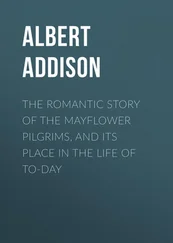Wertenbaker: P. and P. , 14-20; also Va. Mag. Hist. and Biog. , xviii, 339-48.
For accounts of brutal physical combats, see Anburey, ii, 310 et seq. And for dueling, though at an earlier period, see Wise, 329-31. The practice of dueling rapidly declined; but fighting of a violent and often repulsive character persisted, as we shall see, far into the nineteenth century. Also, see La Rochefoucauld, Chastellux, and other travelers, infra , chap. VII.
Schoepf, i, 261; and see references, infra , chap. VII.
After Braddock's defeat the Indians "extended their raids … pillaging and murdering in the most ruthless manner… The whole country from New York to the heart of Virginia became the theatre of inhuman barbarities and heartless destruction." (Lowdermilk, 186.)
Although the rifle did not come into general use until the Revolution, the firearms of this period have been so universally referred to as "rifles" that I have, for convenience, adopted this inaccurate term in the first two chapters.
"Their actions are regulated by the wildness of the neighbourhood. The deer often come to eat their grain, the wolves to destroy their sheep, the bears to kill their hogs, the foxes to catch their poultry. This surrounding hostility immediately puts the gun into their hands, … and thus by defending their property, they soon become professed hunters; … once hunters, farewell to the plough. The chase renders them ferocious, gloomy, and unsociable; a hunter wants no neighbour, he rather hates them… The manners of the Indian natives are respectable, compared with this European medley. Their wives and children live in sloth and inactivity… You cannot imagine what an effect on manners the great distance they live from each other has… Eating of wild meat … tends to alter their temper… I have seen it." (Crèvecœur, 66-68.) Crèvecœur was himself a frontier farmer. ( Writings : Sparks, ix, footnote to 259.)
"Many families carry with them all their decency of conduct, purity of morals, and respect of religion; but these are scarce." (Crèvecœur, 70.) Crèvecœur says his family was one of these.
This bellicose trait persisted for many years and is noted by all contemporary observers.
Story, in Dillon, iii, 334.
The records of Westmoreland County do not show what disposition Thomas Marshall made of the one hundred acres given him by his mother. (Letter of Albert Stuart, Deputy Clerk of Westmoreland County, Virginia, to the author, Aug. 26, 1913.) He probably abandoned it just as John Washington and Thomas Pope abandoned one thousand acres of the same land. ( Supra. )
Westmoreland County is on the Potomac River near its entrance into Chesapeake Bay. Prince William is about thirty miles farther up the river. Marshall was born about one hundred miles by wagon road from Appomattox Creek, northwest toward the Blue Ridge and in the wilderness.
Campbell, 404-05.
More than forty years later the country around the Blue Ridge was still a dense forest. (La Rochefoucauld, iii, 173.) And the road even from Richmond to Petersburg, an hundred miles east and south of the Marshall cabin, as late as 1797 ran through "an almost uninterrupted succession of woods." ( Ib. , 106; and see infra , chap. VII.)
John, 1755; Elizabeth, 1756; Mary, 1757; Thomas, 1761.
Binney, in Dillon, iii, 284.
The ancient trunks of one or two of these trees still stand close to the house.
British map of 1755; Virginia State Library.
See La Rochefoucauld, iii, 707. These "roads" were scarcely more than mere tracks through the forests. See chap. VII, infra, for description of roads at the period between the close of the Revolution and the beginning of our National Government under the Constitution. Even in the oldest and best settled colonies the roads were very bad. Chalkley's Augusta County (Va.) Records show many orders regarding roads; but, considering the general state of highways, (see infra , chap. VII) these probably concerned very primitive efforts. When Thomas Marshall removed his family to the Blue Ridge, the journey must have been strenuous even for that hardship-seasoned man.
She was born in 1737. (Paxton, 19.)
At this time, Thomas Marshall had at least two slaves, inherited from his father. (Will of John Marshall "of the forest," Appendix I.) As late as 1797 (nearly forty years after Thomas Marshall went to "The Hollow"), La Rochefoucauld found that even on the "poorer" plantations about the Blue Ridge the "planters, however wretched their condition, have all of them one or two negroes." (La Rochefoucauld, iii, 135.)
Personal inspection.
Mill-sawed weather-boarding, held by cut nails, now covers the sides of the house, the original broad whip-sawed boards, fastened by wrought nails, having long since decayed.
Practically all log cabins, at that time, had only one story.
See infra .
Six more children were born while the Marshalls remained in "The Hollow": James M., 1764; Judith, 1766; William and Charles, 1767; Lucy, 1768; and Alexander, 1770.
Nearly twenty years later, "Winchester was rude, wild, as nature had made it," but "it was less so than its inhabitants." (Mrs. Carrington to her sister Nancy, describing Winchester in 1777, from personal observation; MS.)
See Mrs. Carrington to her sister Nancy, infra , chap. V.
John Marshall, when at the height of his career, liked to talk of these times. "He ever recurred with fondness to that primitive mode of life, when he partook with a keen relish of balm tea and mush; and when the females used thorns for pins." (Howe, 263, and see Hist. Mag. , iii, 166.)
Most of the settlers on the frontier and near frontier did not use forks or tablecloths. Washington found this condition in the house of a Justice of the Peace. "When we came to supper there was neither a Cloth upon ye Table nor a knife to eat with; but as good luck would have it, we had knives of our [own]." ( Writings : Ford, i, 4.)
Chastellux testifies that, thirty years later, the frontier settlers were forced to make almost everything they used. Thus, as population increased, necessity developed men of many trades and the little communities became self-supporting. (Chastellux, 226-27.)
More than a generation after Thomas Marshall moved to "The Hollow" in the Blue Ridge large quantities of bear and beaver skins were brought from the Valley into Staunton, not many miles away, just over the Ridge. (La Rochefoucauld, iii, 179-80.) The product of the Blue Ridge itself was sent to Fredericksburg and Alexandria. (See Crèvecœur, 63-65.) Thirty years earlier (1733) Colonel Byrd records that "Bears, Wolves, and Panthers" roamed about the site of Richmond; that deer were plentiful and rattlesnakes considered a delicacy. (Byrd's Writings : Bassett, 293, 318-19.)
Читать дальше












